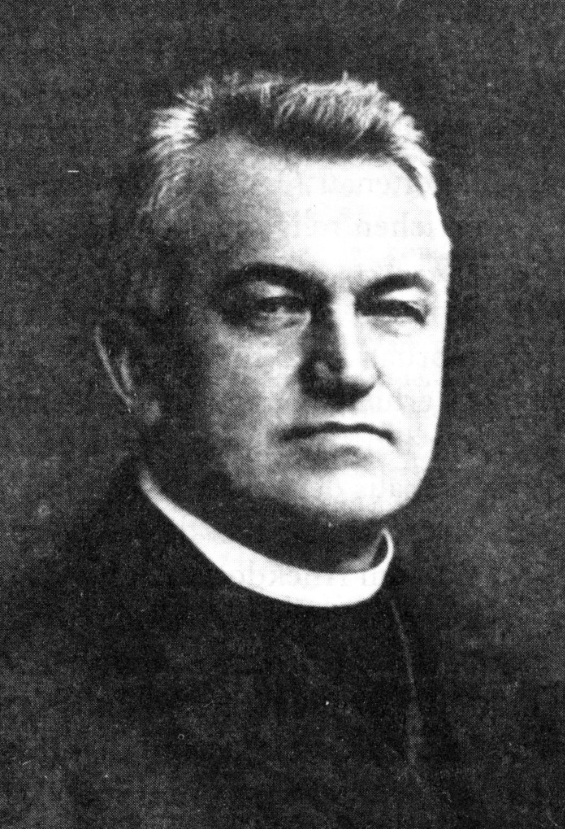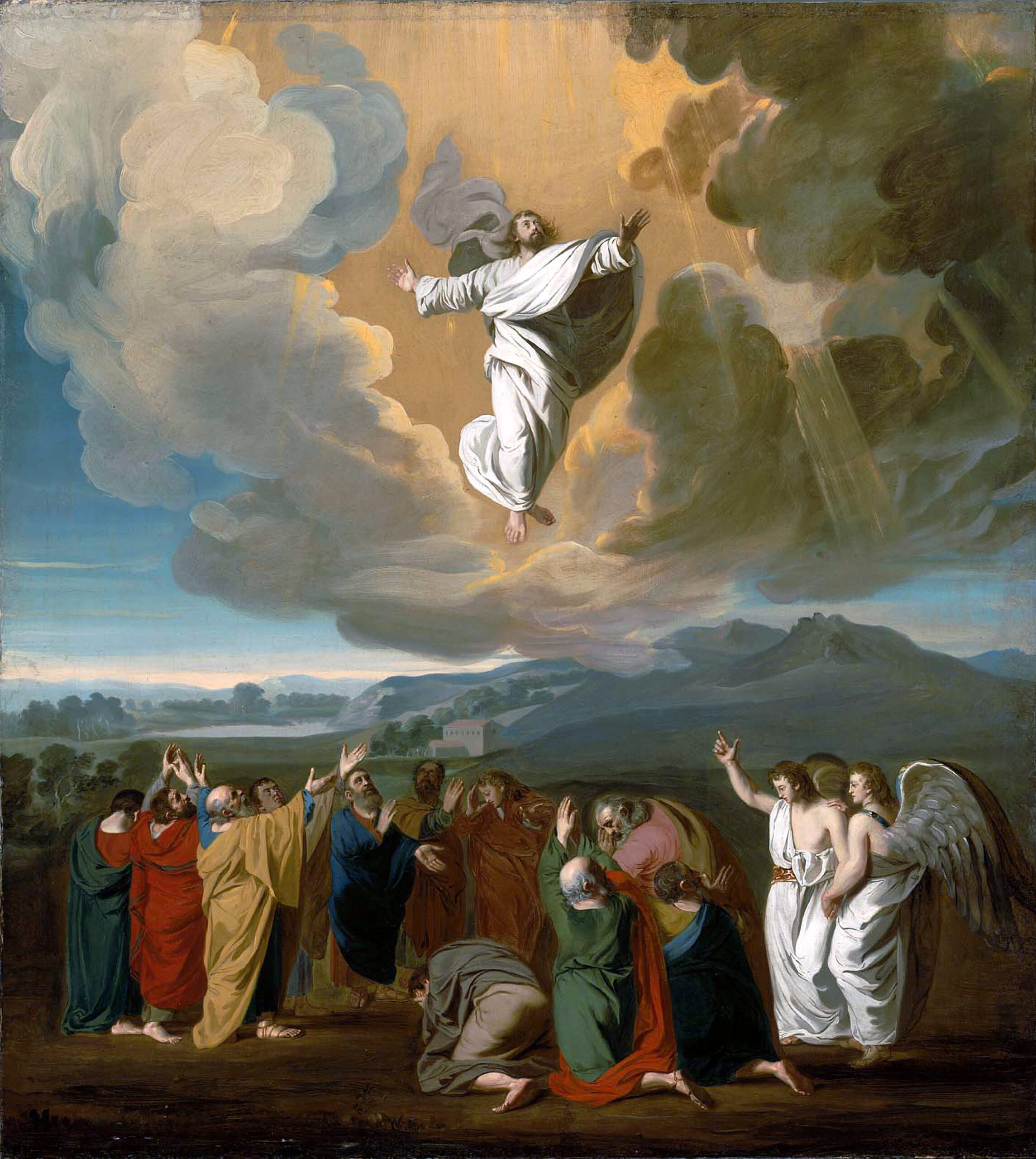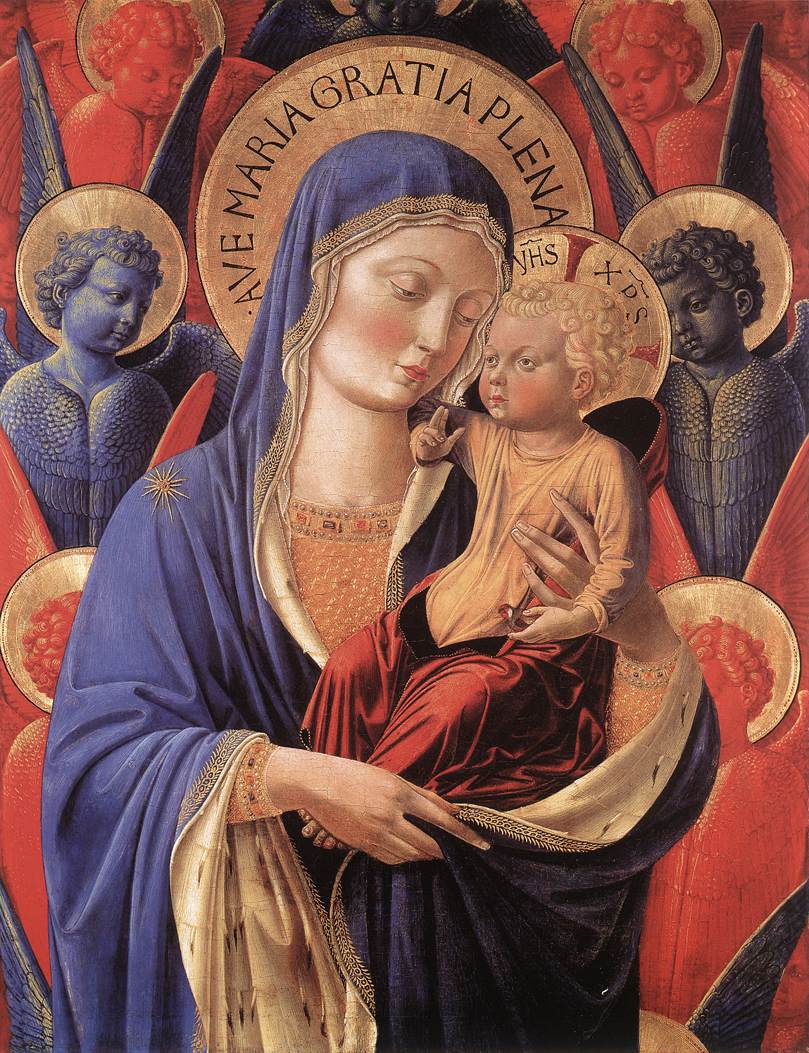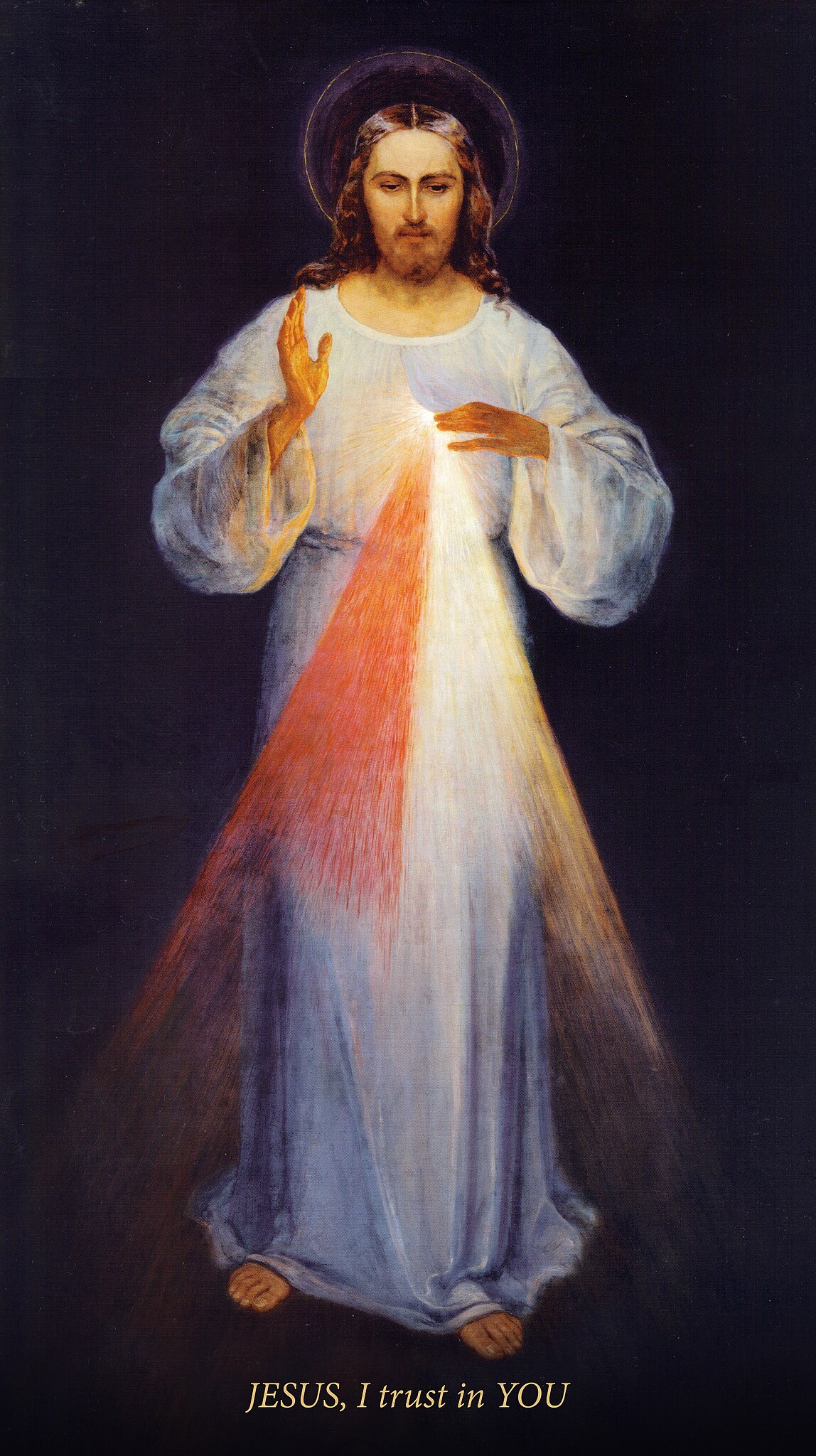It has always been customary among Christians to imitate the example of the archangel Gabriel, and salute our blessed Lady in his words. The devotion to Mary was not introduced by the decree of a council, nor at the behest of any Pope; at all times the faithful have been wont to pay their devout homage to the Queen of heaven. She herself foresaw that this would be so; that all generations would call her blessed (Luke 1:48).
The salutation of the archangel runs thus: “Hail, full of grace the Lord is with thee; blessed art thou among women” (Luke 1:28). The greeting of Elizabeth is this: “Blessed art thou among women, and blessed is the fruit of thy womb” (1:42). The remaining words were added by the Church. The first and second parts are an ascription of praise, the third part is a supplication. The first and second parts were recited by the faithful in the earliest ages of Christianity in their present form, while the concluding words were varied. St. Athanasius used to add: “Pray for us, Patron and Lady, Queen and Mother of God.” From the time of Luther it was customary to end with the words: “Holy Mary, Mother of God, pray for us.” The final clause now in use dates from the reign of Pope St. Pius V., who directed it to be printed in all the authorized prayer-books. After the heretic Nestorius denied the right of the Blessed Virgin to the title of Mother of God, the Ave Maria was more frequently on the lips of Christians than it was in earlier times. And when, in the thirteenth century, other sects arose who refused to give the saints the veneration due to them, the devotion to Our Lady assumed a more and more prominent place, and from that time forth the Ave Maria became an invariable adjunct to the Pater Noster in all the public services of the Church.
The Ave Maria is a most potent prayer, and one which is full of meaning.
The Ave Maria is especially efficacious in time of temptation; many saints recommend the faithful to recite it, when evil thoughts assail them.
It is the part of the inferior to salute the superior. Mary is the Mother of the King of kings, she is the Queen of angels and saints, and yet our Mother also. The highest veneration of angels and men is due to her, and therefore we ought reverently to salute her. The words Ave Maria indicate that Mary is a second, a happier Eve; she is the Mother of mankind. Ave is a play on the name Eva, the order of the letters being reversed. Thus the words of the archangel seem to signify: “Eve was full of sin, thou art full of grace; the devil was with Eve, God is with thee; Eve was cursed among women, thou art blessed among women; Eve gave birth to the accursed Cain, whereas the fruit of thy womb is the blessed Jesus.”
As the moon gives more light than all the hosts of stars, so the Mother of God possesses the supernatural light of the Holy Spirit to a greater extent than all the saints. The full plenitude of grace was poured out on her, whereas it was bestowed but partially on all the other saints. So richly was Mary endowed with grace that she approaches more nearly than any other being to the Author of all grace. God might have created a greater heaven, a greater earth, but a greater Mother than Mary He could not create. The name Mary means sea; she is indeed an ocean of grace. The angel said to her: “Thou hast found grace with God.” Only that which was lost can be found: Mary had not lost grace, therefore she found what man had lost. Let those then who have by their sins lost the grace of God, hasten to Mary, that they may recover it at her hands.
This article is taken from a chapter in The Catechism Explained by Rev. Francis Spirago, which is available from TAN Books.









